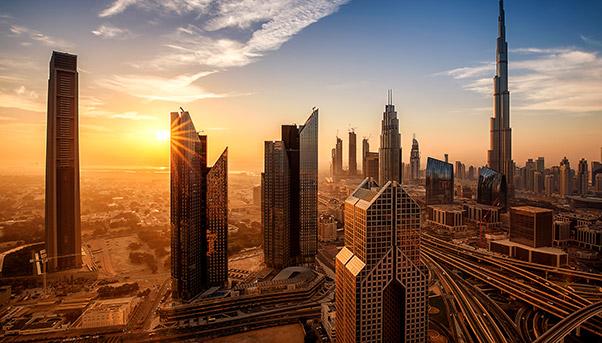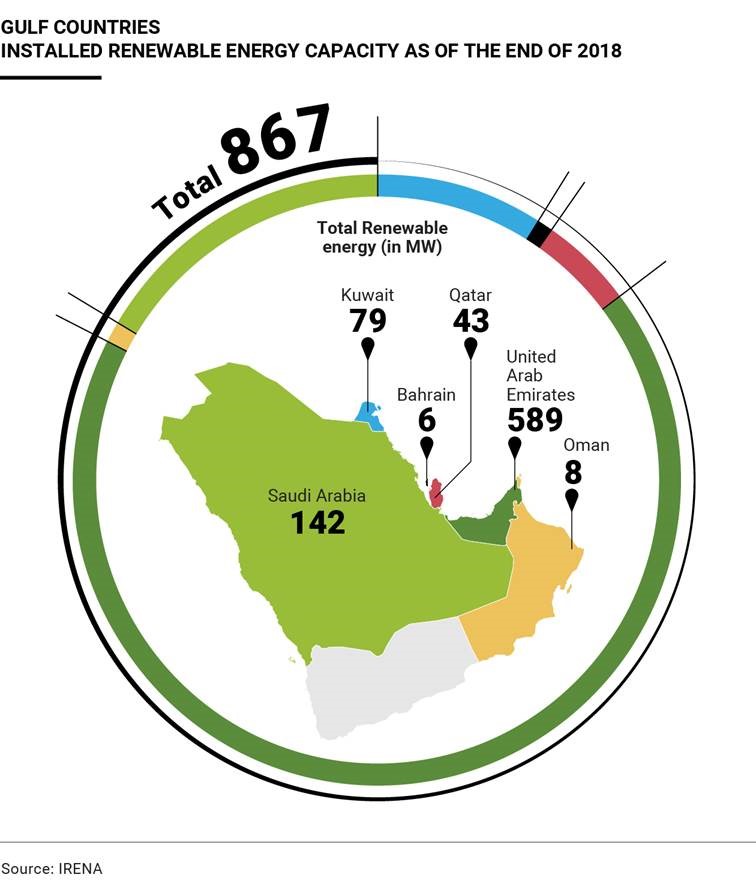
In the Arabian Gulf, the only region in the world where oil and gas reserves exceed those of fresh water, the biggest challenge is to reduce the economy’s dependence on these fossil fuels by expanding into the frontiers of clean energy.
The region’s states are determined to achieve this goal, fully aware that the time has come to diversify their economies from a resource that is finite and increasingly losing its appeal. Although oil remains the world’s main energy source, its weight has been significantly reduced by the rise of renewable energy sources, from water to wind to sun.
And so, faced with growing international pressure on climate change, the Gulf, from Bahrain to Kuwait, from Oman to Qatar, and Saudi Arabia to the United Arab Emirates (UAE), has embarked on the road to sustainable development.
Each state with its own targets
The question facing them when it comes to freeing their economies from oil dependence is not if, but how. The process has already started, and every state is following its own path made of investments, innovative projects, and training of specialised personnel.
The starting point – as pointed out by the “Renewable Energy Market Analysis” published this year by the International Renewable Energy Agency (IRENA) – is the energy production targets set by each of them. Saudi Arabia aims to achieve 30% of total energy production from renewable sources by 2030. Kuwait aims to reach 15% and Bahrain 10% by the same date. The UAE aims for 44% by 2050.
These targets can only be met by making investments in energy infrastructure projects, which each state has launched in recent years to bridge the huge gap that makes them lag behind the most developed countries in terms of sustainable energy production.
The UAE began investing in hydroelectricity a few years ago, installing the first plant in the region. Dubai Electricity and Water Authority oversaw its construction in Hatta, 134 kilometres east of Dubai where a dam will supply it with the necessary water. In late 2018, the Federal Electricity and Water Authority of the UAE announced plans for another plant similar to the one at Hatta as part of its Energy Strategy 2050 to increase clean energy production.
In Saudi Arabia, the King Abdulaziz City for Science and Technology is studying the potential applications of solar energy. Qatar is also heavily invested in solar energy, while Bahrain has set up the Sustainable Energy Unit, a research unit to study clean energy in tandem with the United Nations Development Programme (UNDP).

Clean energy for desalination
Sustainable energy production is closely linked to the issue of water, which is strategic for the Gulf. One of the most effective technologies to meet this need is desalination, which involves the use of plants that transform sea water into fresh water. But desalination requires high energy consumption – all the more reason to develop clean energy sources.
Waleed Zubari, a professor of water resource management at the Arabian Gulf University, stresses that clean energy production and desalination go hand in hand.
«Because energy production is mainly based on fossil fuels – a finite natural resource with environmental externalities – the development of renewable energy to power desalination is needed», said Zubari told The New Arab newspaper. «The most important targets for energy consumption are the most important targets for energy».
Investments for the future
Increasing their energy production in order to supply power to desalination plants is just one of the reasons why Gulf states are investing in clean energy. In addition to the purely environmental aspects, one of the central themes is economic diversification. The aim is to encourage development of other sectors, such as banking or services, for example, which can in turn contribute to overall modernisation.
To do this, all the Gulf states have launched long-term programmes, such as Vision 2030 in Saudi Arabia, which call for substantial investments, especially in infrastructure.
In terms of renewable energy, on the other hand, these countries have only started investing in the last 10 years. The IRENA study demonstrates that in 2007 and 2008 the investments in the sector were practically zero. The first funds allocated date back to 2009, but only in 2015 did the most important programmes begin, with investment reaching $7.2 billion in 2017-2018.
Although the political will is evident, Gulf states are starting from scratch and are still very far from reaching their objectives. According to IRENA, at the end of 2017, less than 1% of the total energy capacity of the region came from renewable sources.
So the region that holds 30% of the world’s oil reserves and 22% of the gas has started on the road to clean energy. But the path is still a long one.

